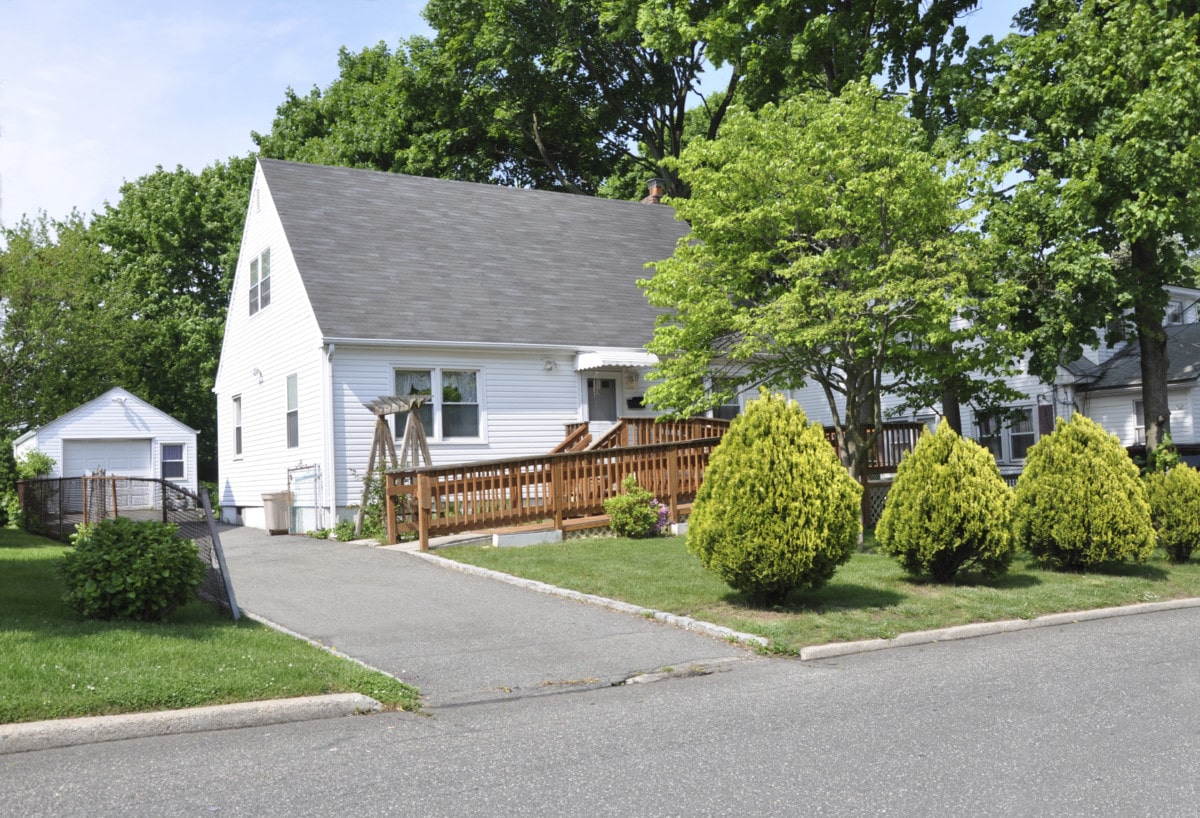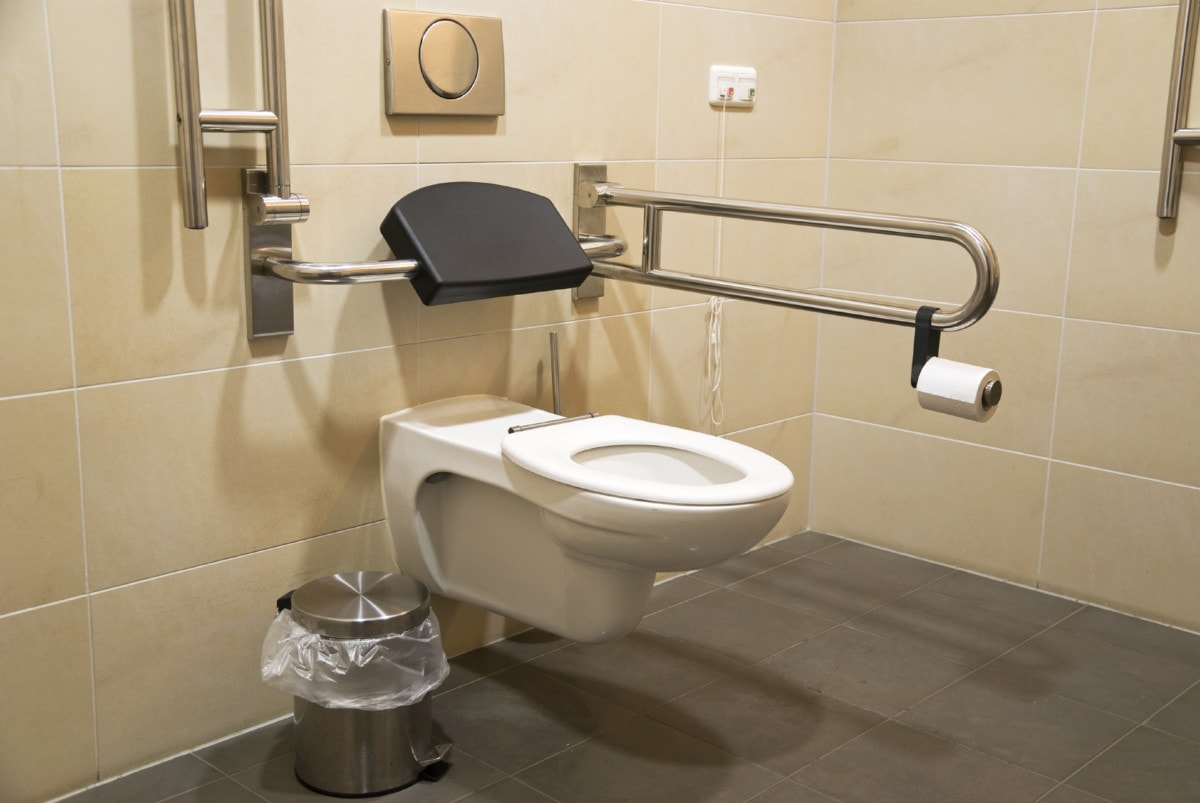The Ultimate Guide to Home Modifications for Persons with Disabilities
It’s important to ensure that the home environment for those with disabilities provides the support they need to lead safe and happy lives. Though newer homes are often built with home modifications for persons with disabilities, older homes may not have these important and necessary features.

Whether you’re living in an older home in Portland, OR that needs significant changes or you are looking for ways to make your new construction home in Atlanta, GA even more accessible to your needs, this guide is for you. It will cover modifications for every area and room to make your home safer and more accessible. After all, a home is only really a home if it brings comfort and enjoyment to all who live there.
Questions to Consider
You may have recently acquired your new ability status, moved into a new home that needs updates, you’re planning to age in place, or simply noticed an opportunity to make your home more easily accessible. Whatever the case, there are important questions you should ask yourself to figure out what home modifications will best suit your needs:
- Are exterior walkways and entrances well-lit and free of tripping hazards?
- Is there at least one entrance into the home without steps?
- Do the exterior doors have good lighting?
- If it’s a multi-story home, does the ground floor have a bedroom, full bathroom, and kitchen?
- Are staircases well-lit, guarded by handrails on both sides, and equipped with light switches at both the top and bottom?
- Are cabinets and shelves throughout the home within easy reach from your height and easily accessible for you?
- Does the kitchen have a work surface you can use while sitting?
- Is there a fire extinguisher within reach of the stove and/or oven?
- Are area rugs secured to the floor or lined with non-slip grips?
- Are there smoke and carbon monoxide detectors on each floor of the home that are able to be heard in all bedrooms?
- Can these changes increase your home value?
You should inspect the exterior of your home and examine each room of your house with each of these questions in mind. Consider the most extreme situations when deciding what changes should be made, and remember, your disability may present new challenges over time that you’ll want to be prepared for.
Exterior Home Modifications
Start your exterior assessment at the curb — is your address easily visible from the street? What about in the dark or in inclement weather? It’s important that emergency personnel can find your house quickly when summoned, so consider all conditions.

Next, move up your driveway and along any walkways to ensure you can get to your front door without encountering any obstacles. Be mindful of cracks that could cause a walker or wheelchair to get caught and put you at risk of a fall.
At least one exterior entrance should have either a flat threshold or a ramp with a railing along both sides and landings at the top and bottom. If your home has stairs to the front or back entrance and you are in a wheelchair, walker, or planning on growing old in your home, it’s important to have a ramp installed. Ideally, ramps and pathways are slightly textured to reduce water accumulation and increase traction for shoes, walkers, and wheelchairs. If you live in an area prone to snow, like Boulder, CO, keep ice melt handy during the winter.
Consider putting in light-motion sensors. These sensors have excellent benefits as they ensure a well-lit pathway, cut down on energy costs by only activating when needed, and even act as a level of home security since potential thieves won’t appreciate a sudden spotlight.
Doors, Hallways, and Stairs
One of the most important factors in keeping your home safe is ensuring that there is sufficient lighting in all areas. Hallways and stairwells often don’t have windows and lack natural light, so make an effort to light them properly. Long hallways should have light switches at both ends, as should the bottom and top of a staircase.
In general, it’s better to keep your home free from area rugs and runners since they can pose a tripping hazard. If you prefer to have them in your home, secure them with carpet tape or skid-resistant lining. For a disability-conscious home, never include a rug on the stairs or located directly at the top or bottom of stairs, even if it’s secured.
If you have limited mobility in your hands or wrists, make sure the doors in your home have handles instead of knobs. You could even consider having power doors installed in the most-used rooms of your house. Be certain they can be operated manually in case of a power outage. Your front door should include a peephole at a comfortable height, as well as a chain that allows you to speak with a visitor without fully opening the door and leaving yourself vulnerable.
The Bathroom
The bathroom can be a dangerous place for anyone — in fact, the CDC reported that each year about 235,000 people ages 15 and over visit the emergency room due to a bathroom-related injury. That means that as a person with a disability, attempting to use a bathroom that doesn’t accommodate your needs can be extremely risky.

The toilet is another area that will require a personal assessment to determine your personal needs. If it’s too low for you to easily transfer to and from, an elevated seat is an easy fix. Some come with arms or guard rails for additional support. There are even those that have adjustable heights to accommodate evolving needs.
Your bathing area is especially important to get right since water will add extra risk. Shower stalls with curtains, roll-in accessibility, and a seat are the safest option even if you don’t use a wheelchair. Eliminating the need to step over a ledge or tub wall greatly reduces your risk of falling. And even with grab bars within the stall, it’s best to give yourself the option of an adequately-sized seat. Ideally, your shower grab bars run the length of the tub and an additional one is placed at the end opposite the drain to make a transfer as easy as possible. A non-slip mat or pads should line the bottom to provide better traction inside, and your bath mat outside should have a non-slip bottom as well.
The sink area can often go overlooked when it comes to accessibility, but it’s an important spot to consider. Countertop sinks are the safest option for support and access. If your sink is free-standing, reinforce it with an “L” bracket into a wall stud so there isn’t any danger when leaning on it. It can also be a struggle to reach the medicine cabinet or see the mirror from a lower angle. You can use a wall mirror instead, or take off the medicine cabinet mirror and either lower it or readjust it at an angle to improve visibility. For extra storage, pull-out shelves can be installed in the space between the sink and where your legs rest. Don’t forget to insulate any exposed plumbing to prevent burns.
The Kitchen
Your kitchen should have at least one easily-accessible workspace that you can access while sitting. It can be a small dining or breakfast table, or a fold-down table securely hinged to the wall — just be sure it’s sturdy enough to bear a fair amount of weight.
The sink will also need to be accessible from a seated position. Even if it’s low enough to accommodate this need, it’s better to create leg space underneath as you did with your counter workspace so you have a more direct angle. You should be able to approach the sink straight forward so you don’t have to come at it parallel. This would result in the need to twist your body sideways, straining your back, neck, and arms.
The stove can be an especially tricky area to make accessible and is certainly one of the most dangerous spots in the kitchen if home modifications aren’t made. Controls should all be on the front of the appliance to prevent having to reach across hot burners. Glass cookware can allow you to keep an easier eye on cooking food, but a less-expensive option may be to attach a removable mirror at an angle to the wall behind the cooktop for better visibility. There should be at least two feet of heat-resistant countertop next to the range to permit sliding hot utensils off a burner without the danger of lifting heavy, heated pots.
Even mindful organizing can make your kitchen a more accessible place. Heavy cooking utensils, dishes, and canned foods should be kept on bottom shelves. Boxes, drinking glasses, small items, and anything not used on a regular basis can go on top shelves. You can even use clear plastic shelving to easily see what’s on higher-level shelves. Lazy susans are a helpful addition to any cabinet or refrigerator to make it easier to grab items in the back, and BBQ tongs or extension grippers can be kept around the kitchen to help with reaching.

The Living Room and Bedroom
Living rooms should have plenty of space to move around easily. Though laminate and tile flooring tend to be better options for hallways, kitchens, and bathrooms, most people appreciate the soft and inviting feel that carpet can add to rooms meant for relaxing, like living rooms and bedrooms. It’s important to choose the right kind, so keep in mind that plush and textured carpet can be difficult to move a wheelchair through and can trip up the legs of a walker or cane. To satisfy both mobility and a feeling of warmth, go for low-pile carpeting, typically 1/4 inch thick. Commercial grade carpet tends to be not only more stain-resistant, but it’s also more durable against the wear and tear of wheelchairs and walkers.
Space your furniture so that you have adequate room to move around. Keep electrical cords and wires tucked behind furniture or mounted along baseboards to keep them free of your path. If your bed frame, coffee or end tables, or any other furniture in your home have sharp corners, it may be a good idea to pad them to avoid painful run-ins. Be sure that any bed skirts, comforters, or furniture slipcovers don’t hang too far to the floor in a way that could create a tripping hazard.
You may want to have a grab bar installed near the head of your bed for easier transfer. If you opt to use a bedside table to aid you, it should be securely mounted into a stud in the wall. Make sure you have a landline accessible from your bedside or an outlet where you can charge your mobile phone overnight so that you can immediately contact help in the event of a nighttime emergency.
You could make some of these adjustments yourself, but always be sure to consult a professional contractor when it comes to mounting grab bars and other furniture to the wall, or any other maintenance projects. Have a two-way dialogue when determining what home modifications to make and exactly how they’re made. Never get talked into anything you’re not comfortable with. When in doubt, get a second opinion. Professionals can be your guide to safety, but it’s important for you to have input on what will make your living arrangements comfortable and accessible.
Buying a Home
The Fair Housing Act makes it illegal to discriminate against potential homebuyers based on a disability. In addition, a lender cannot discourage an applicant from applying for a loan based on a disability, nor can they alter the terms or conditions of a loan for this reason, such as increasing an interest rate. Fortunately, there are many organizations and programs who can help people with disabilities who want to buy a home. Check out our guide on down payment assistance programs to learn more about your rights and the resources available to you.
The post The Ultimate Guide to Home Modifications for Persons with Disabilities appeared first on Redfin | Real Estate Tips for Home Buying, Selling & More.
